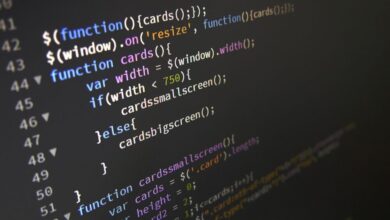
Overexposure to multiple devices leads employees to hyper-connectivity that can lose up to a month a year at work.
The digitalization boom that companies are experiencing, especially during the last two years, has led millions of employees to be exposed to a hyperconnectivity that affects both your personal and work life.
The ‘always on’ which leads to a permanent connection to multiple electronic devices such as smartphones, computers, or smartwatches, among others, leads to constant exposure to stimuli such as emails, messages and notifications that even extend beyond the working day.
According to a study by Aiwin, this hyperconnectivity can cause each employee to lose up to one month of work per year. A waste of time that could be reduced by reducing unnecessary use of the smartphone during the working day, which can lead to gain up to 2 hours a day. These two hours translate into 730 divided by 24 hours a day, which adds up to 30.47 days a year with just that simple gesture.
Along with this loss of working time, hyperconnectivity also has consequences on Mental health of people since this permanent connection in front of the screens of electronic devices can cause, according to the National Institute of Safety and Health at Work, alterations such as insomnia, irritability, bad mood, demotivation, mental exhaustion, lack of energy and less labor performance.
All this highlights the need to disconnect from both devices. This is pointed out by Alicia Gómez López-Oliva, HR Analytics and Rewards Manager at Chiesi Spain, who warns that “At the level of performance and efficiency we need this disconnection. We need to compensate our life on a personal level, enjoy our family, friends, have time for ourselves, for our hobbies, rest properly … Technology has helped a lot in the business world, but we must make correct and controlled use of it “.
Prioritize wellness over hyperconnectivity
Given the increase in this constant technological connection, Aiwin CEO Sergio Jiménez points out that “The most important thing to achieve a situation of digital well-being in companies is that employees know that they should be the ones who decide when to use their devices and not look at the screen in case they have something pending that someone or some algorithm has decided for they”.
Likewise, Aiwin has developed an interactive solution, ON / OFF, so that employees can work on the four dimensions of well-being and learn to manage the consequences of hyperconnectivity.
- Occupational or professional well-being. To counteract the problems that hyperconnection can cause at the workplace, it is important that employees know how to focus on what they are doing and not be distracted by notifications, alerts and calls from other devices. This also contributes to companies helping to manage connection and disconnection times during the working day to facilitate work-life balance.
- Emotional well-being. This variable seeks to do a good management of feelings to face the stress and anxiety of daily challenges. For employees to maintain healthy relationships with their colleagues, the company must transmit a positive and optimistic attitude, for example, with constructive criticism and not through emails or messages since they are colder channels.
- Social welfare. It is important to interact with others and establish healthy social bonds. Companies must remind employees of the importance of sharing quality moments with people by putting devices aside.
- Physical well-being. Enjoying healthy habits is essential and contributes to increasing productivity at work, not only by disconnecting from technological devices, but also with a balanced diet and exercise. This also leads to encourage the realization of disconnection breaks throughout the day to avoid a sedentary lifestyle.



